5 Flower Seeds You Can Sow In July For Late-Season Color
Extend the growing season – and enjoy an abundance of late summer and fall flowers – with this pick of seeds you can sow in July.
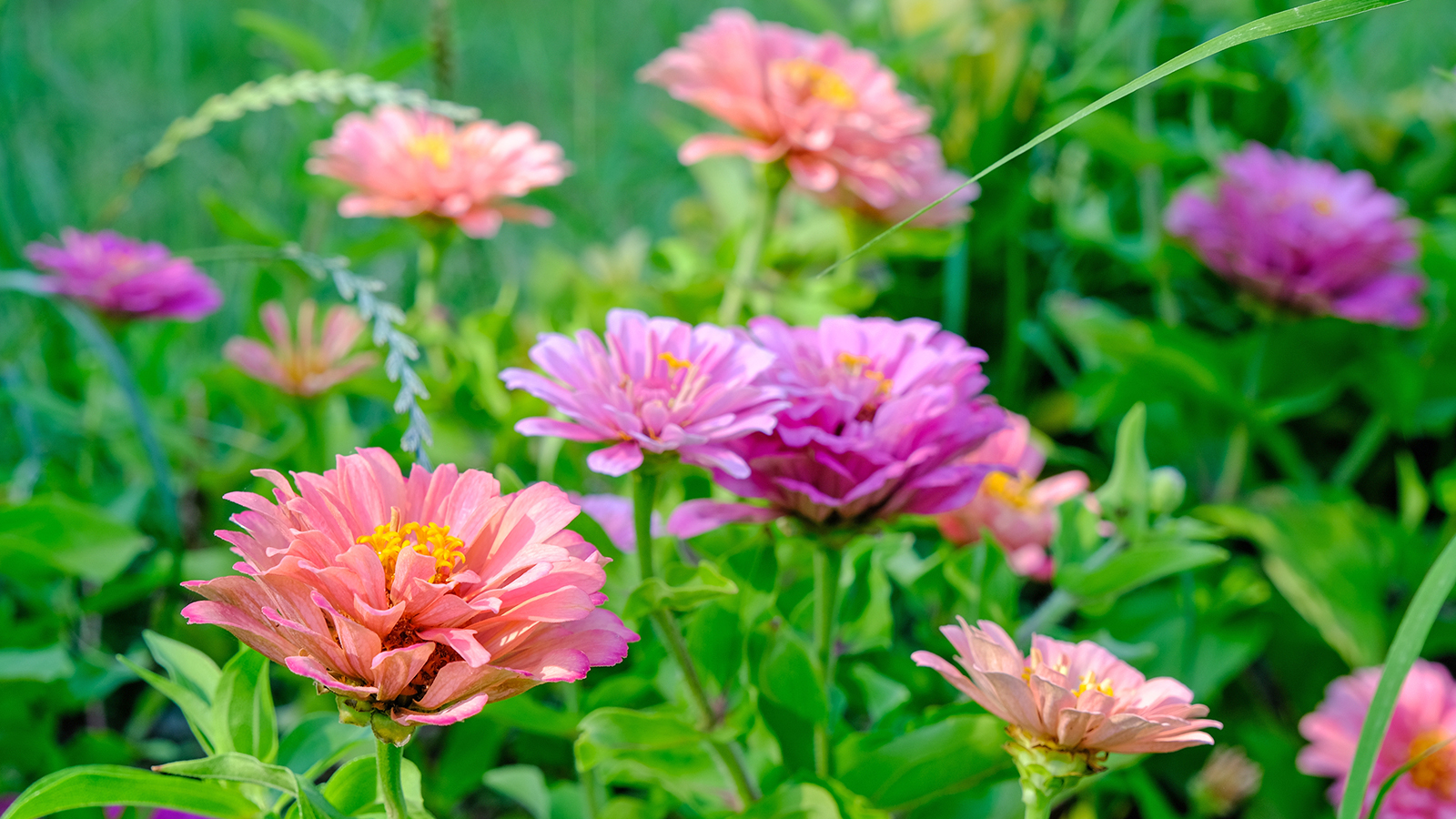

In the height of summer, our gardens are full of riches to enjoy, with flowering annuals and perennials providing a profusion of color and fragrance.
If you want to enjoy annual flowers that bloom all summer, they need to be started earlier in the growing season – often as soon as the last chance of frost has passed in the spring.
However, if you missed the opportunity to start seeds earlier in the year, you will be glad to know that July is not too late to sow seeds of certain varieties.
Your USDA zone is a factor, as tender annuals will soon die off in areas with early fall frosts. However, in many areas, it is possible to plant a late-season display.
Discover the most beautiful speedy blooms that will enable you to enjoy a splash of color from late summer into fall.
1. Zinnias

Cheery zinnias can be planted until the end of July in most climates. They take about 8 weeks to flower, so can be enjoyed in the fall, until the frosts hit.
Sow seeds directly into a flower bed with a full sun aspect, as roots do not like to be disturbed. Keep the soil moist, but not soggy, and thin seedlings according to the seed packet instructions – plant spacing varies considerably depending on the types of zinnia.
Gardening tips, videos, info and more delivered right to your inbox!
Sign up for the Gardening Know How newsletter today and receive a free copy of our e-book "How to Grow Delicious Tomatoes".
Pinching back plants for bushier growth, and deadhead flowers regularly to promote more blooms.
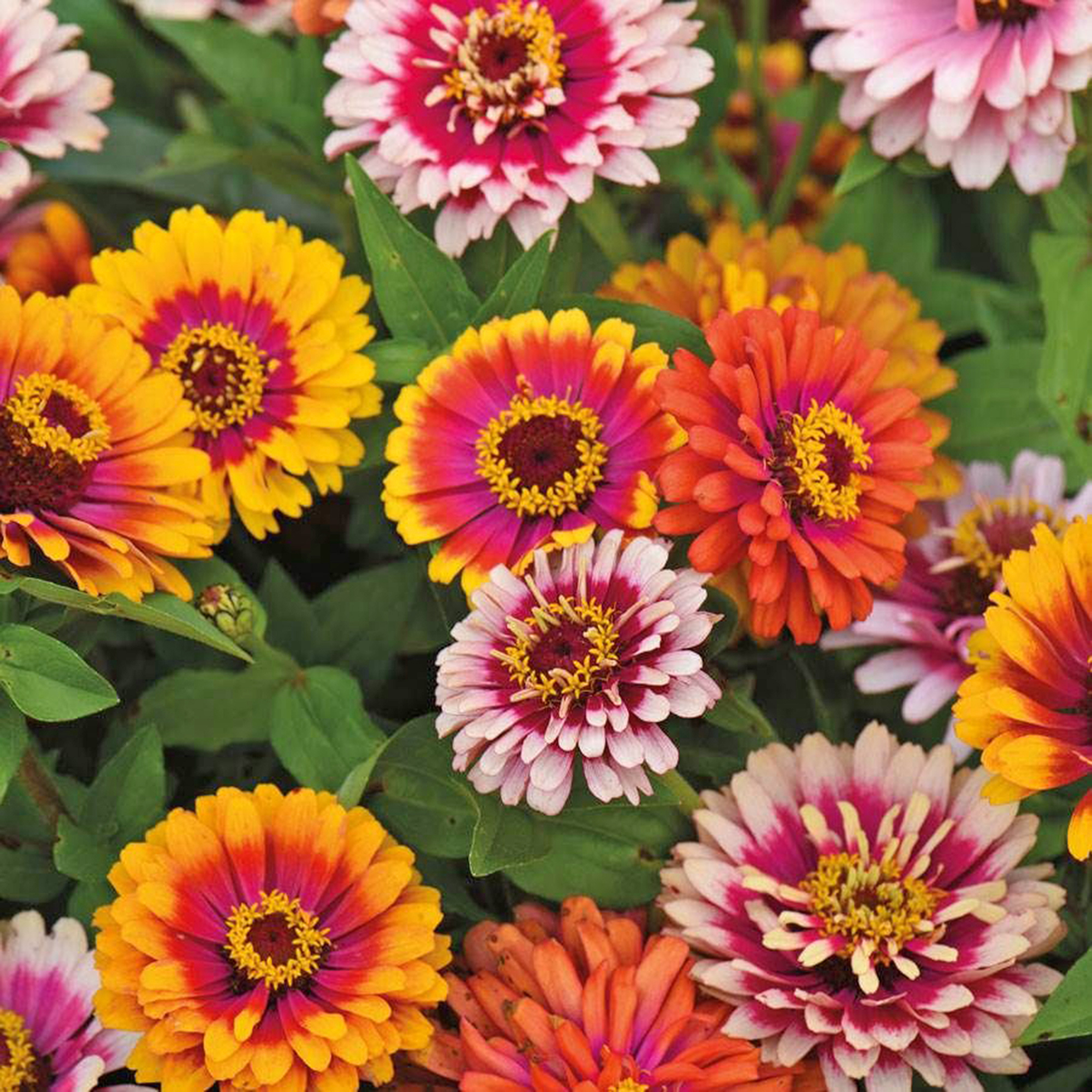
Explore dozens of different flowering plant seeds – from alyssum to zinna – and find the perfect posies for your garden. Our curated selection offers all you need to help your garden shine.
2. Calendula

Calendula takes just 6-8 weeks to grow from seed and the flowers are fairly cold hardy. When planted in July, they make a lovely addition to the garden in late summer and fall.
The edible flowers can be harvested to add a spicy saffron-like flavor to dishes. They are also a deterrent to some pests, making them one of the most popular companion plants for vegetable gardens.
Sow seeds directly into poor to average, well-draining soil – they are suitable for full sun to shadier locations.
Calendula thrives on minimal care – water occasionally after plants are established. Pinch out stalks to prevent spindly plants, and regularly deadhead spent flowers.
3. Sweet Alyssum
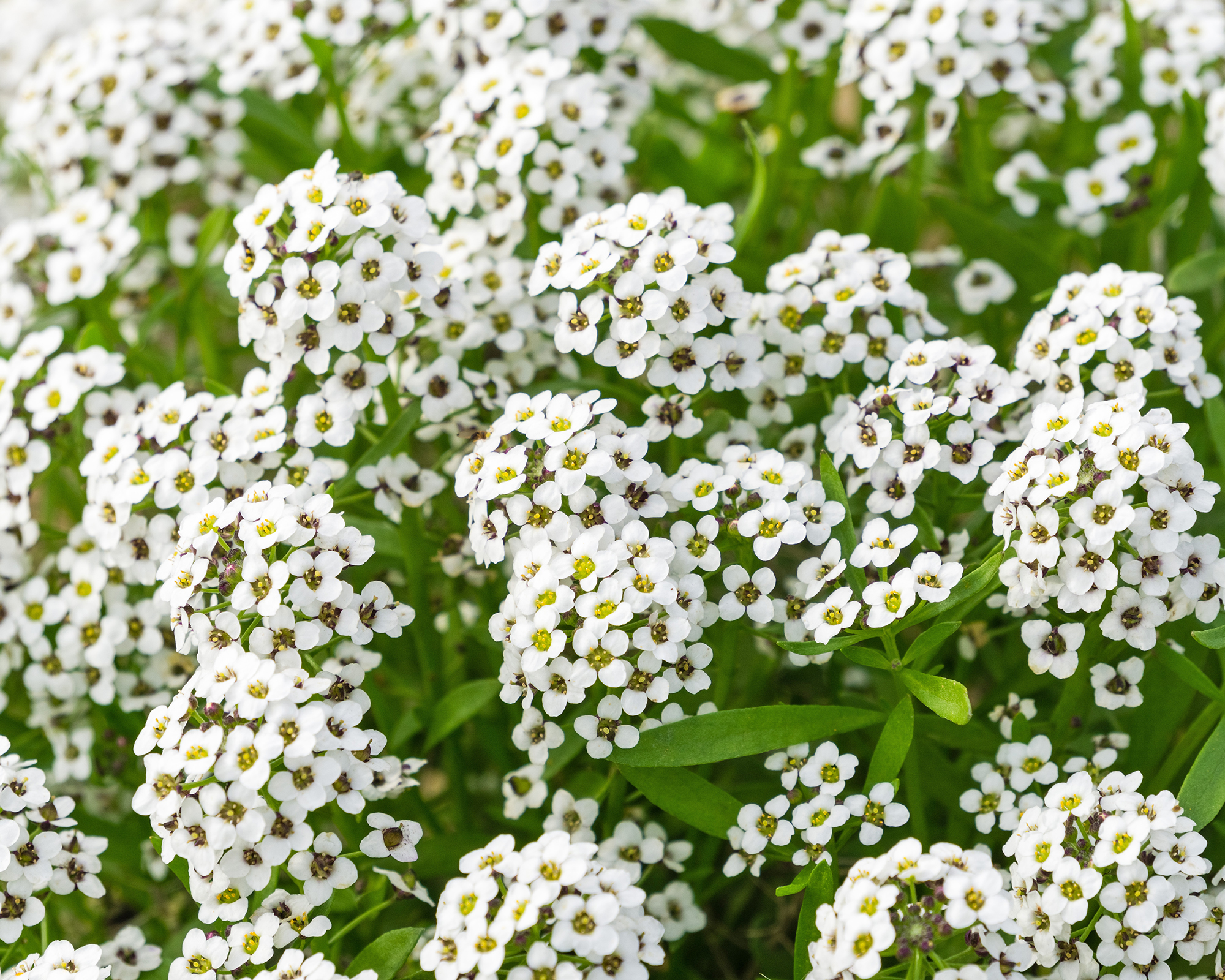
Delicate, lacy sweet alyssum flowers add a romantic touch to gardens and are loved by pollinators.
They are some of the fastest-growing flowers, taking as little as four weeks to grow from seed.
Plants need plenty of sunlight but dislike high summer heat, so try to provide a site that offers some afternoon shade. Growing in higher shade levels is possible, but will result in leggier growth.
Sweet alyssum can be grown in various soil types and requires regular watering.
4. Nasturtium
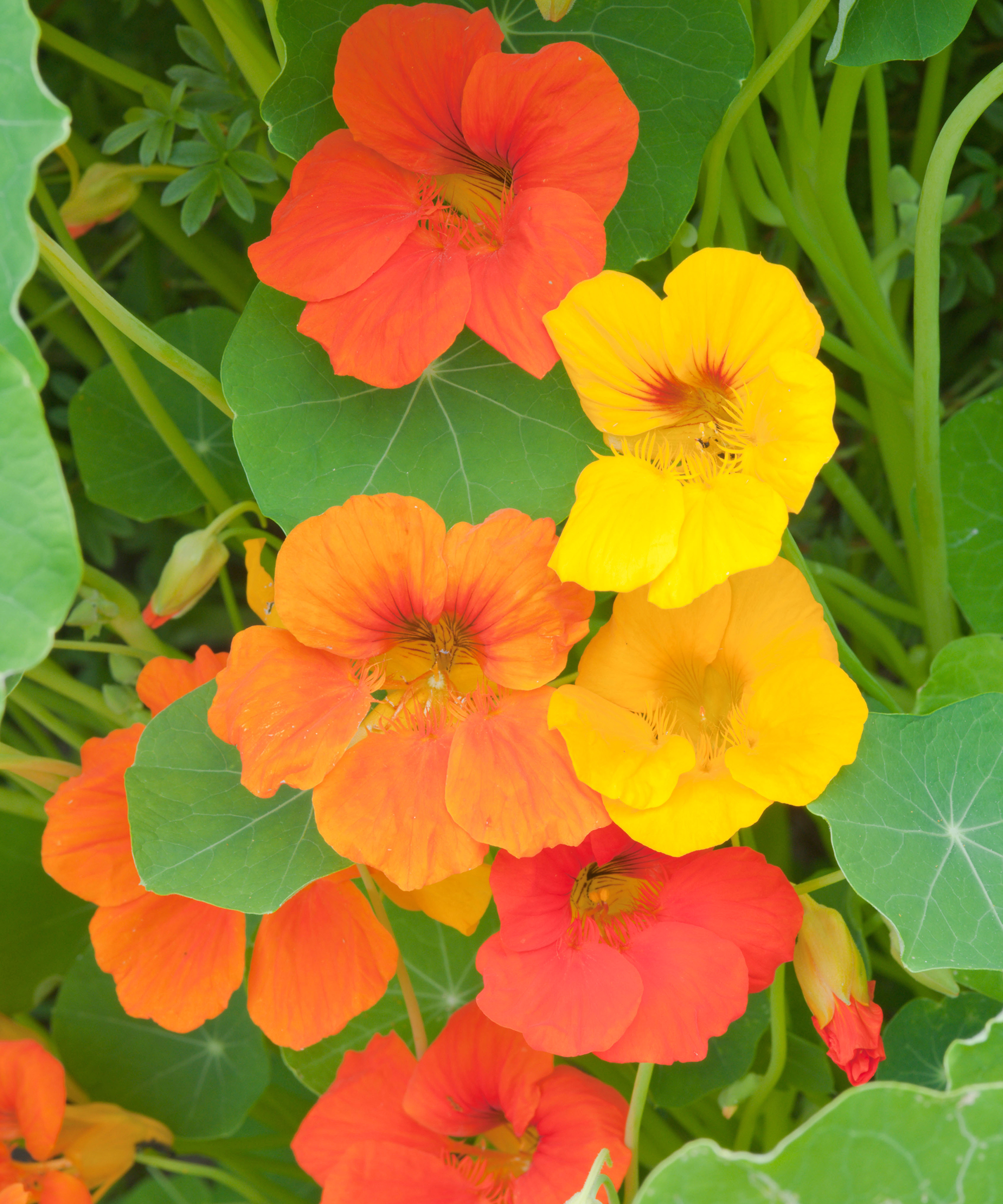
Nasturtium flowers are old-fashioned favorites that are true multitaskers. Not only are they attractive in borders and containers, but the plants are fully edible – possessing a slightly peppery flavor – and make excellent companion plants on the vegetable plot.
They are easy to grow from seed, taking just 4-6 weeks to flower. Plants may be climbing, trailing, or bushy.
Sow seeds in their final position in beds or containers with enough depth to accommodate plenty of root growth.
Nasturtiums are low-maintenance plants that thrive with minimal intervention and poor soil. Overly fertile soil results in all foliage and few flowers.
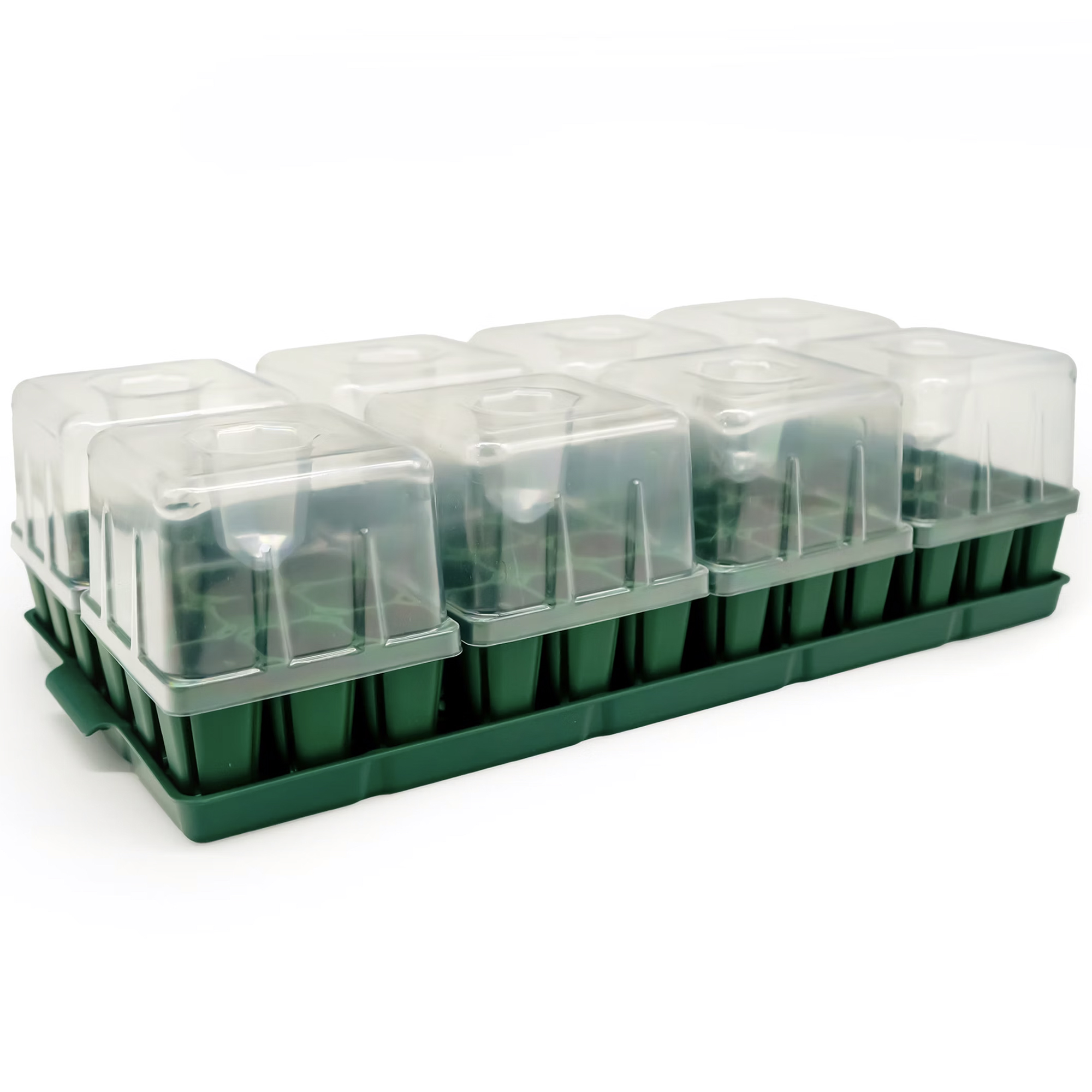
Seedling starting trays are the easiest way to give your new baby plants a healthy start. Choose from the highest-quality seedling trays, lids, and bundles.
5. Black-Eyed Susan
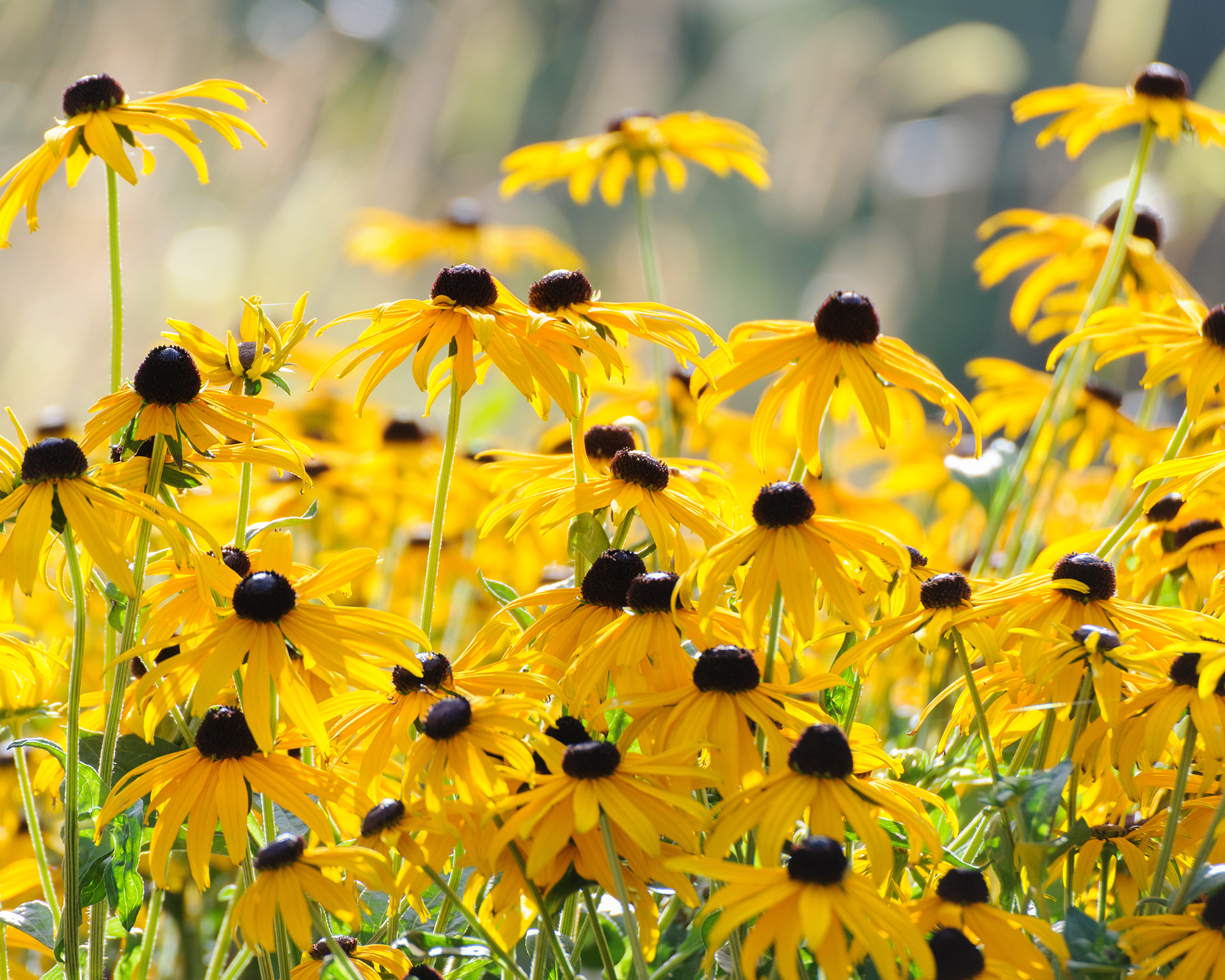
Black-eyed Susan – or rudbeckia – is a versatile plant with sunny daisy-like blooms that add beautiful color to the late summer and fall garden.
It takes 2-3 months to grow them from seed, but most gardeners can get away with sowing as late as July.
Black eyed Susan is drought resistant, heat-tolerant, and self-seeding. It is compatible with a variety of soil types, but thrives in a neutral soil pH and a full sun to light shade location.
Plants are low maintenance, but deadheading black eyed Susan will stop plants going to seed, encourage more flowers, and keep a tidier plant.
This article features products available from third-party vendors on the Gardening Know How Shop.

Melanie is an experienced gardener and has worked in homes and gardens media for over 20 years. She previously served as Editor on Period Living magazine, and worked for Homes & Gardens, Gardening Etc, Real Homes, and Homebuilding & Renovating. Melanie has spent the last few years transforming her own garden, which is constantly evolving as a work in progress. She is also a passionate organic home grower, having experimented with almost every type of vegetable at some point. In her home, Melanie tends to an extensive houseplant collection and is particularly fond of orchids.
-
 Looking For Plants To Give You The Soft And Fuzzies? Try These 5 Fuzzy Leaf Plant Options
Looking For Plants To Give You The Soft And Fuzzies? Try These 5 Fuzzy Leaf Plant OptionsLovers of texture, drama, silver foliage and tactile plants will adore these special sensory garden additions. These fuzzy leaf plant options will leave you all aglow
By Susan Albert
-
 Get Ready For A Summer Of Hummers! Grow These Full Sun Hummingbird Plants and Flowers
Get Ready For A Summer Of Hummers! Grow These Full Sun Hummingbird Plants and FlowersIf you’re lucky enough to enjoy a sunny backyard, make sure you are maxing out on your pollinator opportunities and grow these full sun hummingbird plants and flowers
By Tonya Barnett